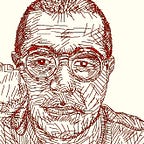From Illusion to Insight: How Consciousness Informs Planning and Design
For a long time, philosophers, scientists, and thinkers have been interested in how consciousness works. Renowned philosopher Daniel Dennett’s perspective, as revealed in a recent interview (link: https://youtu.be/eSaEjLZIDqc?si=AB1C2YkmxnYycv2e), posits that our perception of consciousness is deceptive. Instead of showing us what’s really happening, our brains make up things we think are real.
These illusory constructs range from how we perceive objects, denoted as “phenomenal properties”, to the distinction between our public and private representations. Dennett, echoing the views of numerous scientific thinkers, asserts that mere theoretical speculation regarding consciousness is insufficient; empirical experimentation is imperative for authentic comprehension.
But beyond Dennett’s perspective, there’s a growing notion that consciousness is not a static entity. It’s akin to a football player in the throes of a game, constantly adapting, strategizing, and evolving. This player isn’t solely reliant on past training, but rather crafts and refines strategies in real-time, analogous to how consciousness perpetually updates and integrates new experiences. This dynamic nature of consciousness can be traced back to evolutionary principles. Evolution has consistently favored adaptability, and a consciousness that can adapt itself based on ongoing experiences offers an evolutionary advantage.
It’s not merely about absorbing and storing information; it’s about actively interpreting, predicting, and reacting to the world. Every experience, whether monumental or mundane, reshapes our cognitive framework. The mutability of consciousness, when viewed through an evolutionary perspective, suggests that it can be viewed as both a result and a process. The capacity to adapt their conscious experiences to their environment thrived as species evolved. This same dynamism allows us to understand and navigate the world today, as we confront novel experiences.
For creative professionals, especially those in urban and landscape planning and design, grasping the fluidity and dynamism of consciousness is paramount. As planners and designers craft environments for human interaction, understanding the ever-evolving nature of consciousness can provide insights into how people perceive, interpret, and engage with these spaces. Just as consciousness isn’t a passive repository but an active constructor of reality, a city, or landscape isn’t merely a backdrop; it’s a living entity that interacts with its inhabitants.
Each design intervention isn’t just a static element but becomes a part of the larger narrative of the environment, influencing and being influenced by the myriad conscious experiences of those who inhabit or traverse it. The adaptability inherent in human consciousness can serve as a blueprint for designers, encouraging them to create spaces that aren’t just aesthetically pleasing but are also flexible, resilient, and responsive to the dynamic world they nestle within.
In conclusion, consciousness is not just a philosophical conundrum; it has profound implications for practical fields like planning and design. While it remains an enigmatic force, its ever-evolving nature, deeply rooted in evolutionary principles, significantly influences how we interact with our surroundings. This understanding, whether drawn from Dennett’s insights or analogies like the adaptive football player, is essential for designers and planners. Recognizing the dynamic interplay between consciousness and environment allows for the creation of spaces that resonate with human experience, adaptability, and growth. As we move forward, merging these insights with design practices will lead to more harmonious and responsive urban and natural landscapes.
Disclosure: This article contains affiliate links to my books. If you purchase a book or read it through Kindle Unlimited, I’ll earn a commission or receive compensation at no extra cost to you. Thank you for your support! Please note that due to my location, Medium does not allow me to receive any direct earnings from the readership of my articles. Your support through purchasing or reading my books is greatly appreciated and helps sustain my writing.
- Design Meaning: Meaning Design by R. B. Assunção (tiogegeca)
Kindle Edition https://amzn.to/4bhMsrL Dive into the intricate relationship between design and meaning in this thought-provoking exploration. Perfect for anyone fascinated by how design shapes our experiences and interactions, this book challenges, inspires, and enlightens readers across disciplines. - Planning Philosophy: Philosophy Planning by R. B. Assunção (tiogegeca) Kindle Edition https://amzn.to/3WEX3sT Explore the interplay between philosophy and urban planning. This edition has been significantly revised and expanded, offering focused reflections on how planning philosophy and philosophy of planning shape our physical and social environments.
- Lições Solitárias: Arquitetura e Evolução das Ideias by R. B. Assunção (tiogegeca) Available in eBook and Print-on-Demand (Brazilian edition) https://amzn.to/3w5logB Dive into a reflective journey, where architecture meets the evolution of ideas. This book offers fresh perspectives on the materialization of projects, discussing project representations and processes enriched with the author’s drawings. Ideal for architects, designers, engineers, and anyone interested in urban planning and humanity’s progress.
- A PERSONALIDADE ARQUITETÔNICA DE OURO PRETO by R. B. Assunção (tiogegeca) Kindle Edition — Available only as eBook (Brazilian edition) https://amzn.to/3V2yCUM Embark on a unique journey through Ouro Preto with a guide that intertwines architectural insights with the rich historical tapestry of this iconic city in Minas Gerais, Brazil. This eBook expands into a dialectic exploration of Ouro Preto’s evolving identity, from its 17th-century origins to its present-day allure. This guide is not just about architectural styles but is a profound reflection on how architecture and urban planning encapsulate the soul of a place.
